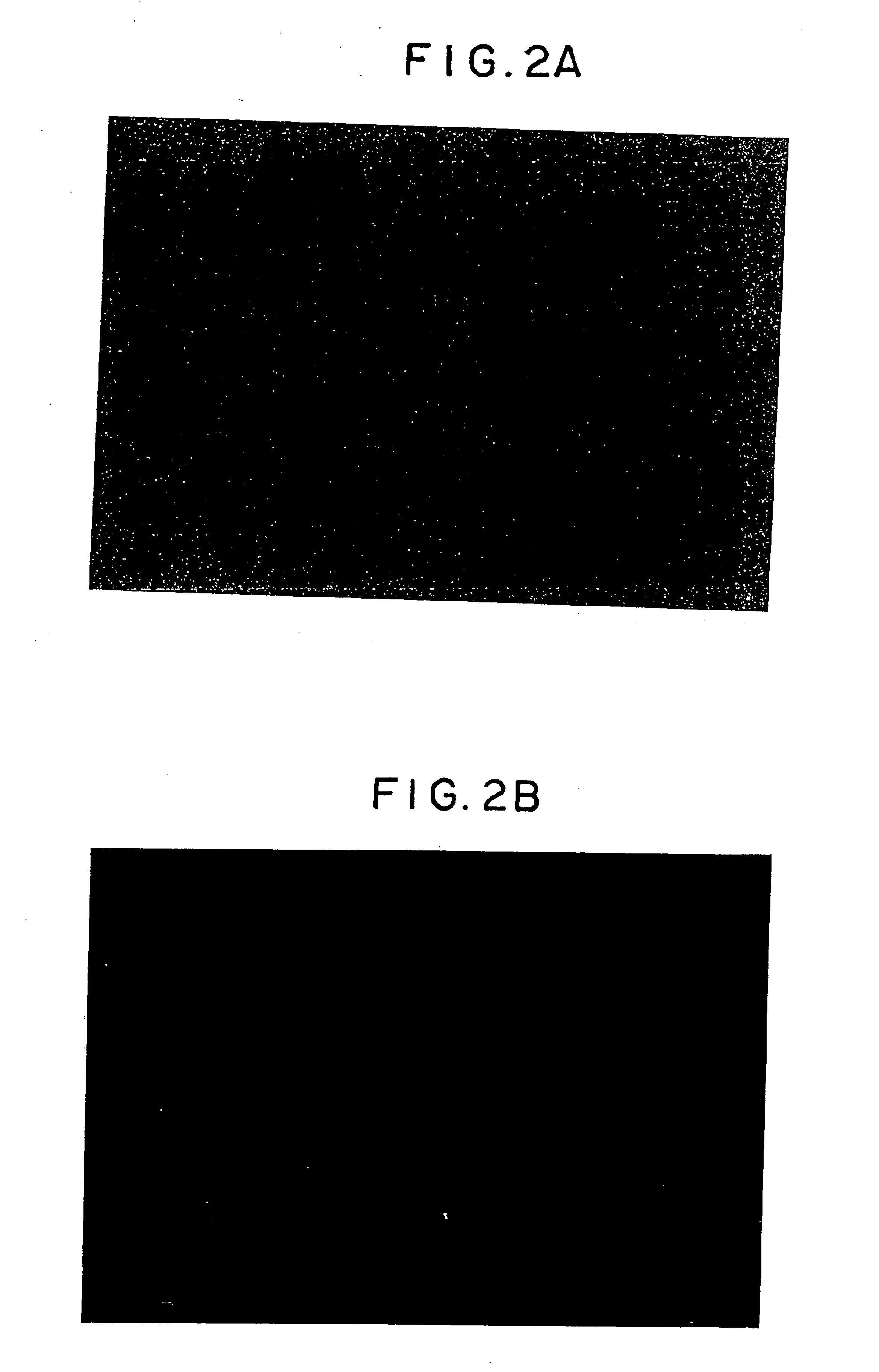Antibody against rat postacrosome reaction sperm and utilization thereof
a postacrosome and antibody technology, applied in the field of monoclonal antibodies, can solve the problems of time and cost, difficulty in establishing the method of fertility evaluation, and difficulty in obtaining the effect of sperm,
- Summary
- Abstract
- Description
- Claims
- Application Information
AI Technical Summary
Benefits of technology
Problems solved by technology
Method used
Image
Examples
example 1
Method for Collecting Immunogens
Wistar male rats (age in 14 weeks) were killed by exsanguination under anesthesia with ether, from which the cauda epididymides were removed and immediately placed in a Petri dish containing 10 mL of m-KRB (modified Krebs-Ringer bicarbonate medium) containing 1% BSA (bovine serum albumin; Bayer) warmed at 37° C. (1 plate per cauda epididymis). Cleavages were made at 2-3 parts of the cauda epididymis, which was gently stirred and allowed to stand for about 5 minutes to release spermatozoa. The spermatozoa suspension is moved into a 50 mL tube, into which a calcium ionophore A23187 (Sigma) was added thereto at a final concentration of 10 μM and incubated for about 15 hours in a CO2 incubator. After terminating incubation, the treated spermatozoa were washed twice with PBS(−), then adjusted at a predetermined concentration, and preserved at −20° C.
example 2
Immunization of Mice
In Jcl female mice (age in 6 weeks), the first day of immunization was regarded as 0 day, and booster immunization was made on the 14th, 21st and 28th days. For immunization, the above-treated rat spermatozoa were administered subcutaneously in the back of the mice at a dose of about 1×107 per shot as an equal mixture with Freund's complete adjuvant and as an equal mixture with Freund's incomplete adjuvant, respectively, on day 0 and on the 14th day. On the 21st and 28th days, only spermatozoa were administered intraperitoneally.
example 3
Method for Preparation of Hybridoma
Three days after the final immunization, the spleen was removed from the immunized mice and used in cell fusion.
A suspension of splenic cells prepared on an RPMI1640 medium (GIBCO) was mixed with SP-2 cells (murine myeloma cells) at a ratio of about 4:1, permitted to undergo cell-fusion using polyethylene glycol 2000 (Sigma) and then washed with an RPMI1640 medium. Thereafter, the number of cells was adjusted to be about 2×106 cells / mL by dilution with an RPMI1640 medium containing 15% FCS (fetal calf serum; Mitsubishi Chemical), of which 100 μL each was distributed into each well of 96-well microplates, with 6 plates per mouse. The next day, 100 μL of HAT medium (hypoxanthine, aminopterin, thymidine, 15% FCS-containing RPMI1640 medium) was added to each well. On the 2nd, 3rd, 5th and 8th days, half of the medium was replaced with a HAT medium, and on the 10th and 13th days, half of the medium was replaced with an HT medium (hypoxanthine, thymidine...
PUM
| Property | Measurement | Unit |
|---|---|---|
| pH | aaaaa | aaaaa |
| particle size | aaaaa | aaaaa |
| concentration | aaaaa | aaaaa |
Abstract
Description
Claims
Application Information
 Login to View More
Login to View More - R&D
- Intellectual Property
- Life Sciences
- Materials
- Tech Scout
- Unparalleled Data Quality
- Higher Quality Content
- 60% Fewer Hallucinations
Browse by: Latest US Patents, China's latest patents, Technical Efficacy Thesaurus, Application Domain, Technology Topic, Popular Technical Reports.
© 2025 PatSnap. All rights reserved.Legal|Privacy policy|Modern Slavery Act Transparency Statement|Sitemap|About US| Contact US: help@patsnap.com



